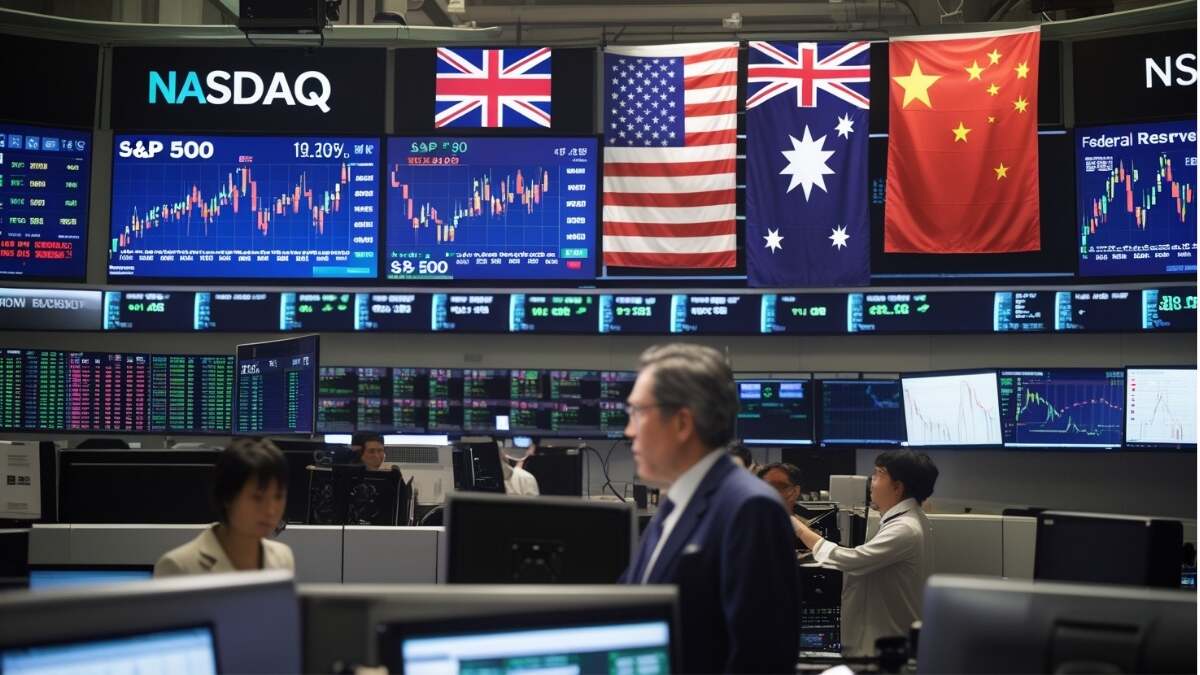In early trade, Japanese shares fluctuated between gains and losses, while Australian shares dipped.
Following a Wall Street surge that sent stocks and Treasuries higher, a decline in producer prices bolstered expectations that the Federal Reserve would start reducing interest rates next week, but Asian markets were divided Thursday.
Asian Markets Show Mixed Moves
In early trade, Japanese shares fluctuated between gains and losses, while Australian shares dipped. Following Wednesday’s 0.3% increase in the S&P 500 to a new record, US futures slightly increased. The tech-heavy Nasdaq 100 saw a little increase at the close of the day.
While government bonds in Australia and New Zealand increased on Thursday, treasuries remained stable after a gain across the curve on Wednesday. Early on Thursday, the yen gained momentum versus the US dollar, while the dollar index hardly moved.
Fed Rate Cut Speculation
Following an unexpected drop in producer prices for the first time in four months, the US market‘s actions on Wednesday showed renewed hope that the Fed would lower rates next week. Prior to the release of US inflation statistics later Thursday, the data allayed concerns that high inflation would make it difficult for authorities to avert a jobs loss.
According to Ian Lyngen and Vail Hartman of BMO Capital Markets, “investors are now considering the extent to which August’s payrolls, the benchmark revisions, and PPI should drive a conversation about a 50 basis-point cut next week.” “The 25 basis-point cut camp is still in place. The core-CPI move will need to be weak tomorrow in order for a half-point to be a realistic possibility.
Producer Prices Signal Caution
With the revision of July’s number, monthly US producer prices excluding food and energy fell 0.1% in August compared to the previous month, below consensus predictions of a 0.3% gain. According to Neil Dutta of Renaissance Macro Research, the data might suggest that businesses are attempting to maintain their competitiveness in order to hold onto market share.
“I do not anticipate the Fed will reduce 50 basis points next week,” Dutta said. “The FOMC‘s doves have a compelling argument. The hawks will argue that there is still upward inflation pressure ahead of us as a result of tariffs, that the unemployment rate is still low, and that financial conditions remain loose.
Global Data and Trade
Among the Asian statistics scheduled for publication on Thursday are Malaysian industrial production and Australia’s inflation projections. Interest rates should remain steady, according to the European Central Bank‘s forecast later Thursday.
Alibaba Group Holding Ltd. is aiming to raise $3.17 billion via what Bloomberg News reports would be the largest issuance of zero-coupon convertible notes this year. During Wednesday’s New York trade, the company’s ADRs dropped 2.2%.
In other news, after weeks of a furious dispute over tariffs and Russian oil sales, US President Donald Trump and Indian Prime Minister Narendra Modi promised to speak and to begin trade talks, suggesting a potential thaw.
Inflation in the US
According to the Bloomberg poll median estimate, the core CPI—a gauge of underlying inflation that does not include food and fuel—likely increased by 0.3% for a second month. A figure that is lower than anticipated might lead to further conjecture about a 50 basis point Fed reduction the following week.
Ulrike Hoffmann-Burchardi of UBS Global Wealth Management said that the Fed should continue to lower rates due to a combination of a slowdown in job growth and still-manageable inflation. A 25 basis point cut is anticipated in September, followed by three more consecutive cuts of the same magnitude by January 2026.
Commodities Rise Amid Uncertainty
Chris Larkin of Morgan Stanley’s E*Trade said, “Tomorrow’s CPI will carry more weight, but today’s PPI result practically threw out the red carpet for a Fed rate decrease next week.” It is unclear how much of an immediate effect this will have on mood, however, given the market was already anticipating the Fed to start an easing cycle after last week’s employment data.
As investors considered Trump’s next steps to put pressure on Russia, they were concerned about crude supply, which caused oil to rise for a fourth day and gold to rise early Thursday following gains in the previous session.
According to Economy Minister Marcelo Ebrard, Mexico is seeking to impose duties of up to 50% on steel, textiles, automobiles, and auto parts from China and other nations with whom it does not have a trade deal.

